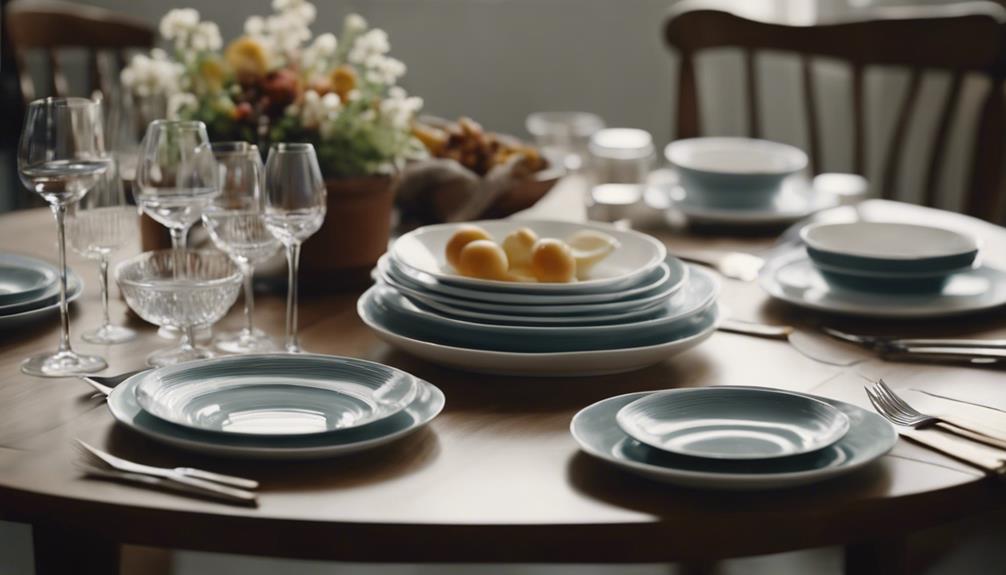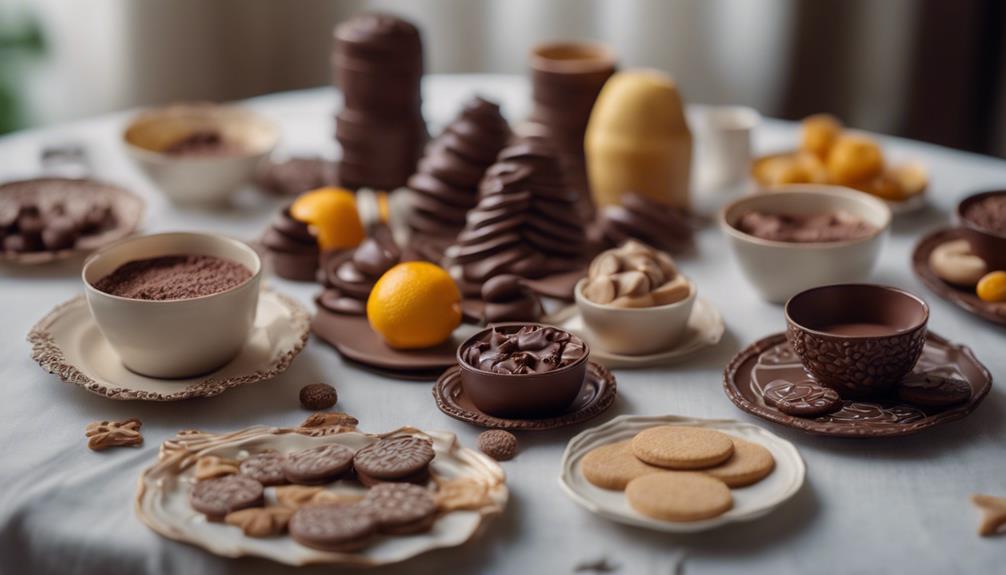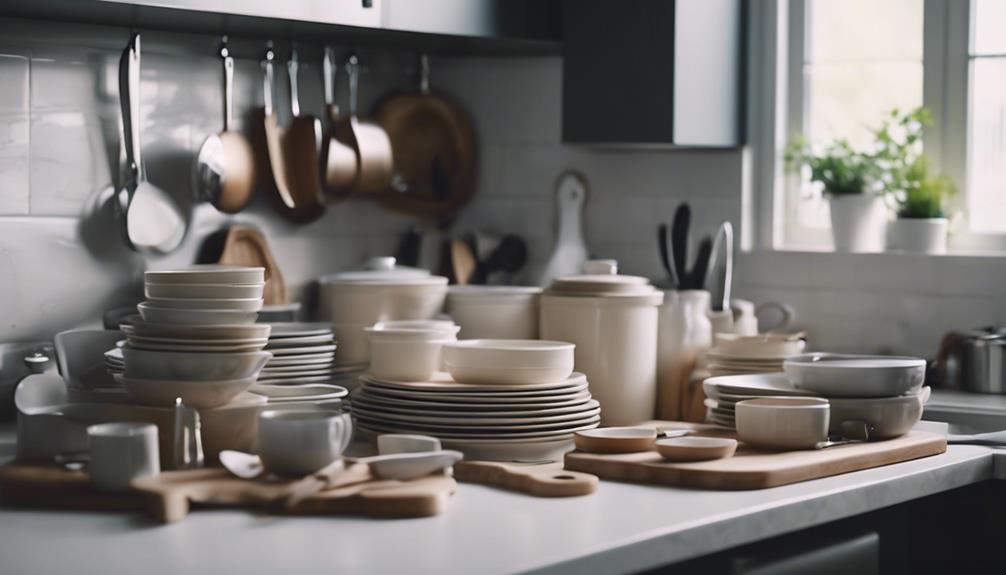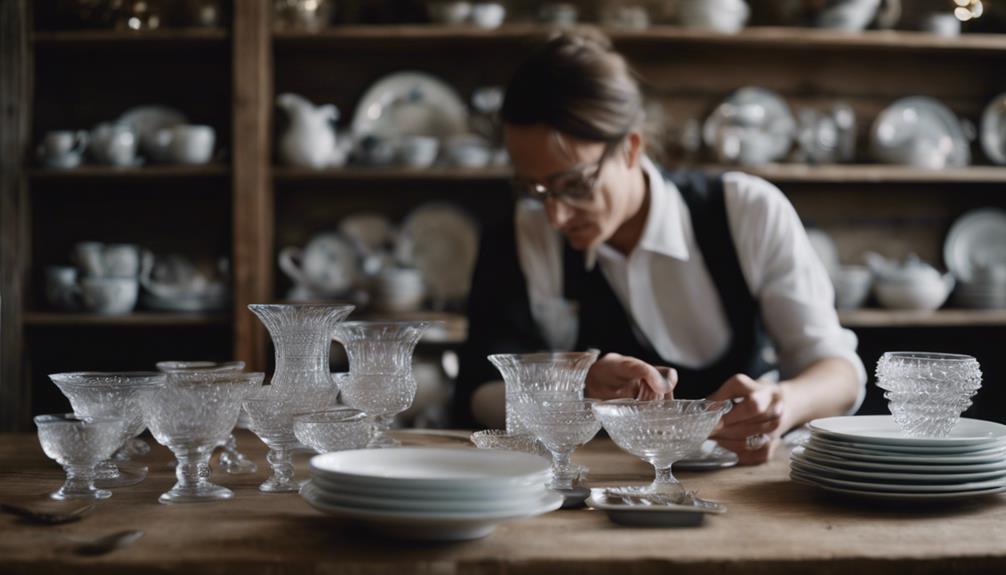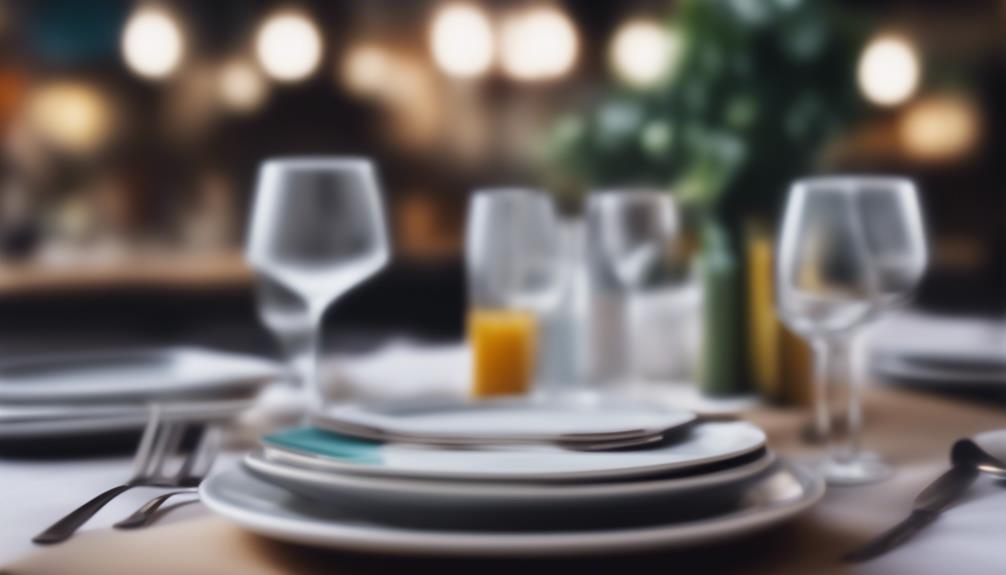Tableware encompasses various items such as serving dishes, dinner plates, and cutlery. It is available in ceramic, glass, stainless steel, silver, and wood, providing choices for different occasions. Sustainable materials like bamboo and recycled glass are gaining popularity. Traditional designs utilize materials such as bone china and porcelain, while modern options offer tempered glass and melamine for increased durability. The selection of tableware depends on the type of event, number of guests, menu, and level of formality. For large events, consider rental options, while purchasing is suitable for smaller gatherings. The material and design of tableware significantly impact the dining experience and atmosphere. Different elements cater to a variety of preferences and styles. Explore the extensive world of tableware to find the perfect fit for your needs.
Key Takeaways
- Tableware includes serving dishes, dinner plates, and cutlery for dining purposes.
- Materials range from ceramic and glass to sustainable options like bamboo and recycled materials.
- Traditional and modern designs cater to different preferences and trends.
- Components like soup bowls, salad plates, and drinkware enhance dining experiences.
- Tableware selection depends on event nature, guest count, menu, and formality.
Types of Tableware
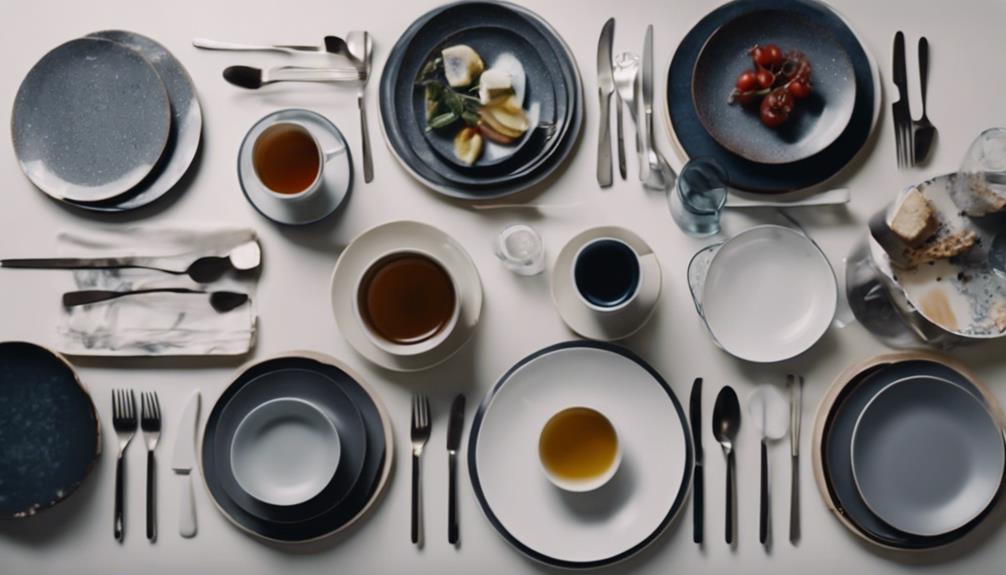
When setting the table for a meal, understanding the different types of tableware is vital to guarantee a smooth dining experience. Serving dishes, dinner plates, and cutlery are essential components that play specific roles during mealtime. Serving dishes, such as platters and bowls, are designed to present and serve food efficiently, while dinner plates serve as the foundation for the meal, holding the main course and sides. Cutlery, also known as silverware, includes knives, forks, and spoons, all serving unique purposes in aiding the dining process. Knives for cutting, forks for spearing food, and spoons for scooping or stirring.
Having the right tableware not only enhances the dining experience but also adds elegance to the setting. Choosing the appropriate serving dishes, dinner plates, and cutlery can elevate the presentation of your meal, making it more enjoyable for you and your guests. So, next time you set the table, pay attention to the different types of tableware to ensure a delightful dining experience.
Materials Used
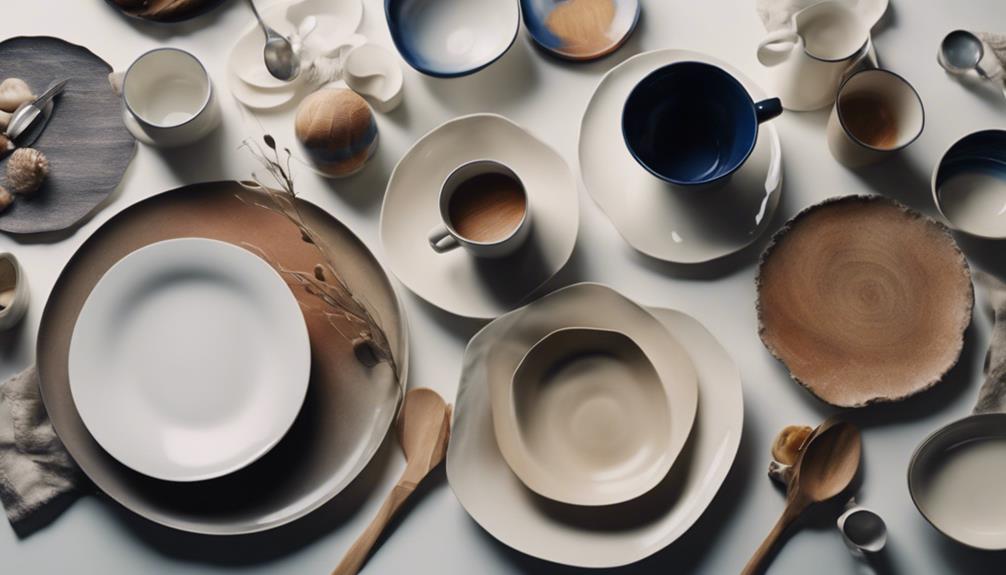
Tableware materials like ceramic, glass, stainless steel, silver, and wood offer a range of options for your dining needs.
Sustainable tableware choices are becoming increasingly popular, with materials like bamboo and recycled glass gaining traction.
Whether you prefer traditional or modern designs, there's a material suited to your style and functionality preferences.
Common Tableware Materials
Common tableware materials encompass a diverse range of options, from ceramic to stainless steel, offering both durability and aesthetic appeal. Explore the following common materials used for tableware:
- Ceramic Materials: Including earthenware, stoneware, bone china, and porcelain, known for their durability and elegant designs.
- Stainless Steel: A popular choice for cutlery due to its strength, corrosion resistance, and easy maintenance.
- Other Materials: Such as wood, pewter, tempered glass, acrylic, and melamine, providing a wide variety of options to suit different preferences and styles.
These materials not only enhance the dining experience but also contribute to the overall aesthetics of the table setting.
Sustainable Tableware Options
Sustainable tableware options incorporate eco-friendly materials like bamboo, palm leaf, sugarcane bagasse, cornstarch, and recycled paper, providing biodegradable and compostable alternatives to traditional plastic tableware. These materials are essential for serving food and drink in an environmentally conscious way.
Biodegradable disposable plates made from bamboo aren't only durable and lightweight but also naturally antimicrobial, ensuring a safe dining experience. Sugarcane bagasse tableware, derived from sugarcane residue, offers sturdy options that are microwave-safe.
Cornstarch tableware, sourced from corn, presents a renewable choice for disposable plates, cups, and cutlery. Embracing these sustainable alternatives not only reduces plastic waste but also promotes a greener approach to dining.
Traditional Vs. Modern Designs
Moving from the discussion on sustainable tableware options to the comparison between traditional and modern designs, you'll find that the materials used play a significant role in shaping the aesthetics and functionality of tableware. Here are three key differences to take into account:
- Traditional Designs: Utilize materials like porcelain, stoneware, and silver, focusing on intricate patterns and classic shapes for a timeless look.
- Modern Designs: Incorporate materials like tempered glass, acrylic, and melamine for durability, featuring clean lines, minimalist aesthetics, and innovative materials for a contemporary feel.
- Materials Evolution: The shift in tableware materials reflects changing trends in design, functionality, and sustainability, showcasing a blend of heritage and innovation in both traditional and modern tableware designs.
History and Evolution
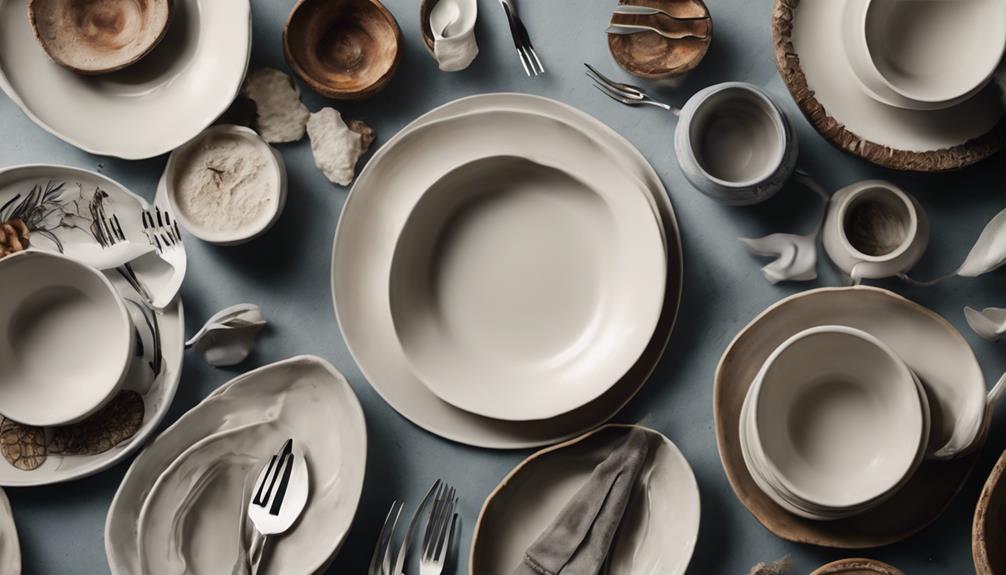
Early tableware had a utilitarian focus, with pottery primarily used for pots and jars before flatware gained prominence.
Precious metals such as gold and silver were favored by ancient elites for their tableware.
Trenchers, bread rounds serving as plates, were prevalent in medieval dining settings.
Tableware Origins
During the evolution of tableware, early pottery primarily served functional purposes such as pots and jars rather than flatware.
- Ancient Preference: Elites favored precious metals like gold and silver for their tableware.
- Medieval Practice: Trenchers, bread rounds used as plates, were common in dining rituals.
- Regulatory Measures: Tableware ownership was controlled by sumptuary laws as a symbol of wealth.
Understanding tableware origins sheds light on how pottery, precious metals, and sumptuary laws played significant roles in shaping the development of dining culture.
From simple pottery vessels to extravagant gold and silver pieces, the evolution of tableware reflects societal norms and preferences across different historical periods.
Materials Used
As tableware evolved over time, the shift from precious metals to alternative materials like porcelain in the 18th century marked a significant transformation in the history and evolution of materials used for dining essentials.
Early pottery primarily consisted of pots and jars before progressing into flatware for tableware. In ancient times, elites favored exclusive tableware pieces made from precious metals such as gold and silver. The ownership of tableware historically represented wealth and was even subject to regulation through sumptuary laws.
Plate melting for financial gain during the Middle Ages led to the scarcity of surviving examples. However, the 18th century saw porcelain emerge as a popular replacement for precious metals in the production of plates, cutlery, and other dining essentials.
Design Trends
Design trends in tableware have undergone a remarkable evolution, reflecting shifts in lifestyle preferences and aesthetic sensibilities over time. Here are three key aspects of the current trends:
- Modern Aesthetics: Contemporary tableware designs lean towards minimalism, featuring clean lines and functional aesthetics.
- Sustainable Materials: The use of eco-friendly materials like bamboo, recycled glass, and biodegradable plastics is on the rise in modern tableware design for a more environmentally conscious approach.
- Customizable Options: Tableware now offers customizable choices such as personalized monograms and unique shapes, allowing individuals to tailor their dining experience to their specific preferences and add a personal touch to their table settings.
Serveware Essentials
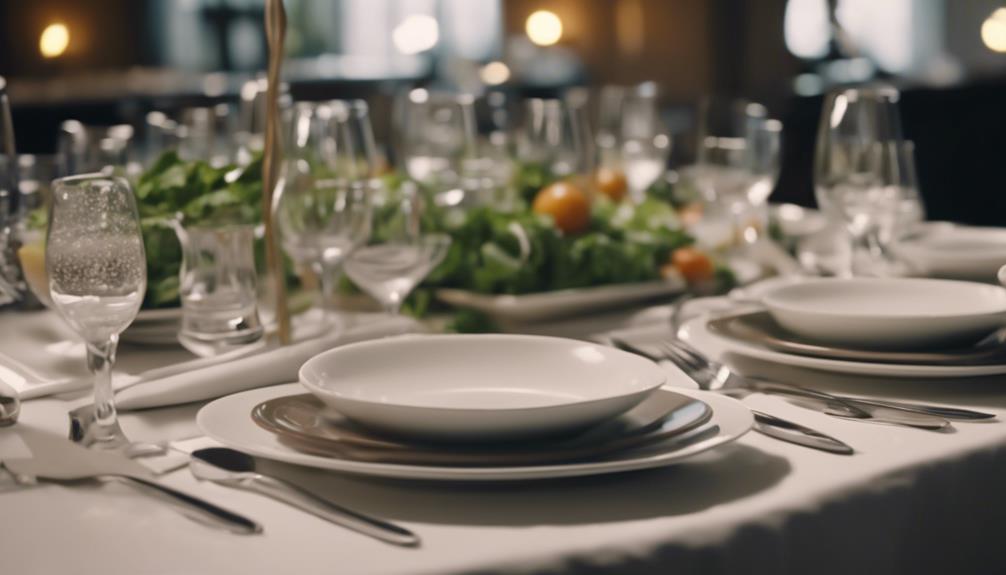
Enhancing the presentation of your dishes, serveware essentials include serving bowls, platters, utensils, pitchers, and containers for drinks made from various materials like ceramic, glass, and metal. Serving bowls come in different sizes and shapes, perfect for presenting salads, pasta, or side dishes. Serving spoons and ladles are important utensils for serving food gracefully and efficiently. Pitchers are ideal for serving beverages like water, juice, or cocktails, while containers for drinks keep your beverages cool and easily accessible.
Choosing the right serveware can elevate the dining experience for you and your guests. The versatility of materials like ceramic, glass, and metal allows you to match your serveware to your table setting or occasion. Whether it's a formal dinner party or a casual family meal, having the right serveware essentials ensures that your dishes are presented beautifully and served with convenience. Make sure to invest in quality serveware pieces that not only look elegant but also enhance the functionality of your dining table.
Dinnerware Components
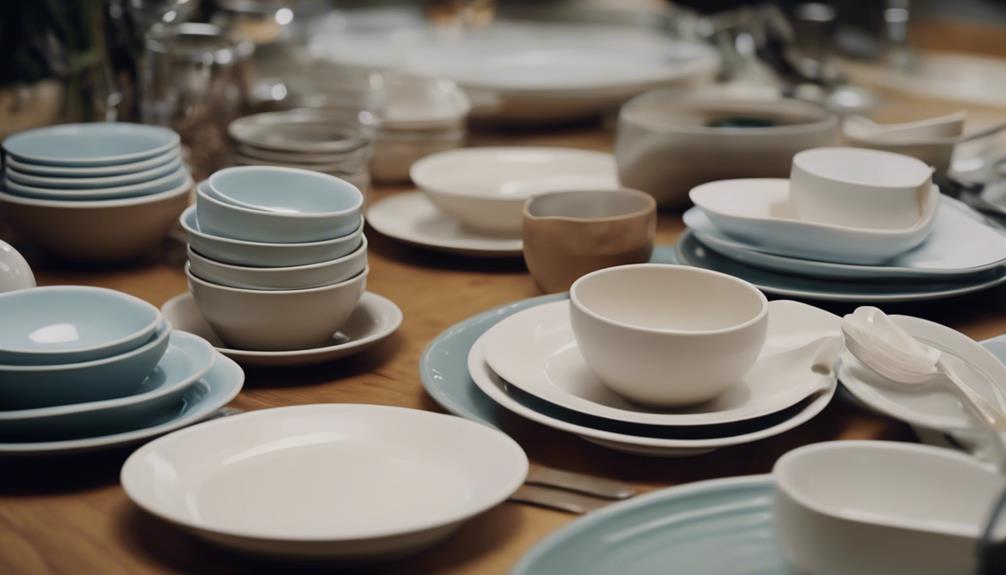
Investing in quality dinnerware components enhances the overall dining experience and elevates the presentation of your meals. When setting your table, consider the following essential components:
- Soup Bowls: These bowls are deeper than regular plates and are perfect for serving delicious soups, stews, or chili. Their design helps prevent spills and keeps your table tidy during soup courses.
- Salad Plates: Smaller than dinner plates, salad plates are ideal for serving fresh salads, appetizers, or desserts. They add variety to your table setting and help control portion sizes for starters or lighter dishes.
- Water Glasses: Water glasses are a staple for any table setting, providing guests with an invigorating drink option throughout the meal. They're versatile and can also be used for serving other beverages like juice or soda.
Choosing the right dinnerware components not only enhances the visual appeal of your table but also ensures practicality and functionality during meal service.
Silverware and Cutlery
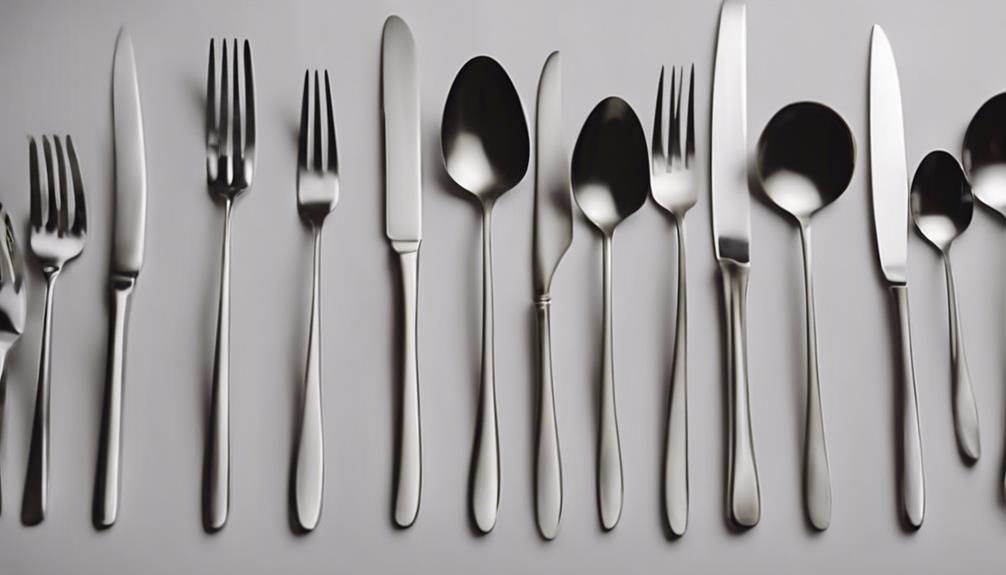
When selecting silverware and cutlery for your table setting, consider the function and material of each piece to guarantee a cohesive dining experience. Cutlery encompasses a range of utensils, including spoons, forks, and knives, essential for dining. These items come in various sizes, shapes, and materials like stainless steel, silver, wood, and plastic.
Different types of cutlery serve specific purposes; for example, you have soup spoons for soups, dessert forks for sweets, and steak knives for cutting through meats. Whether you're hosting a formal dinner or a casual gathering, silverware and cutlery play an important role in setting the tone for your meal.
The quality and design of these utensils can greatly impact the overall dining experience, enhancing both the visual presentation and the practical aspects of enjoying your food. Choose your cutlery wisely to elevate your dining table and ensure a pleasant eating experience for you and your guests.
Drinkware Selection
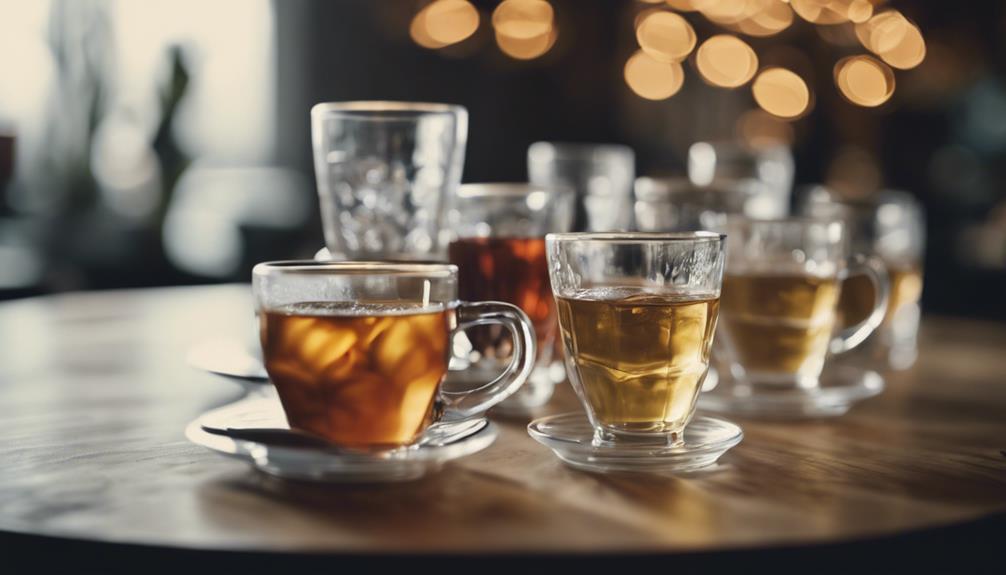
Selecting the appropriate drinkware is essential for ensuring an enjoyable dining experience, as different types of glasses and cups cater to specific beverages. When choosing your drinkware, consider the following:
- Beer Glasses: Beer glasses come in various shapes and sizes, each designed to enhance the drinking experience of different beer styles. From pint glasses to beer mugs, selecting the right beer glass can elevate the aroma and flavor of your favorite brew.
- Wine Glass: Wine glasses are crafted to complement different types of wine. The shape of the glass can affect how the wine tastes, making it important to choose the right wine glass for reds, whites, or sparkling wines.
- Tumblers: Tumblers are versatile drinkware options suitable for a range of beverages, from water to cocktails. Tumblers like whiskey glasses or highball glasses offer a sturdy and practical choice for everyday use.
Consider the type of beverages you typically enjoy to determine which drinkware will best suit your needs and enhance your drinking experience.
Choosing Tableware for Events
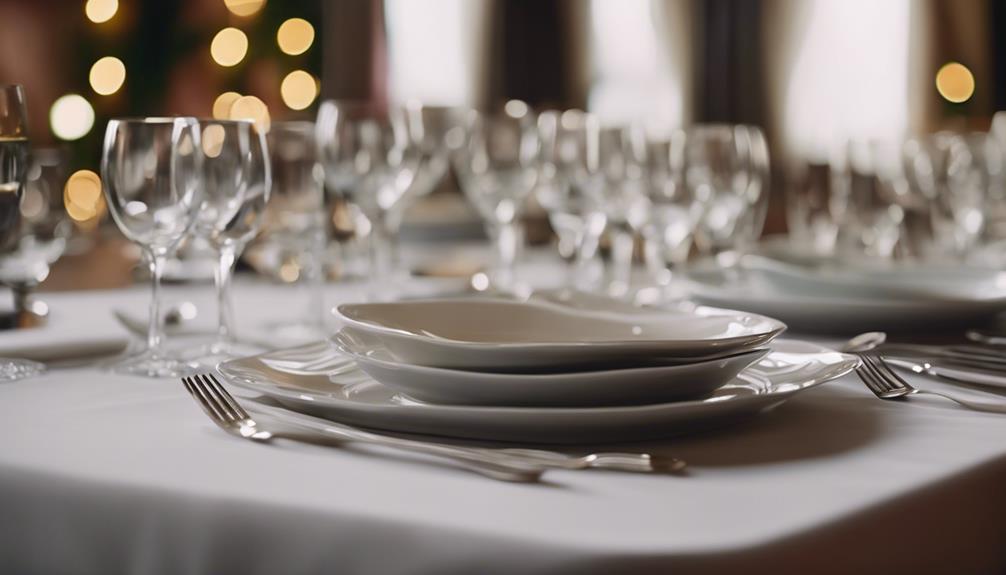
Carefully select the tableware you choose for your events to guarantee a memorable dining experience for your guests. Consider the nature of the event, the number of guests, the menu, and the formality to create an unforgettable dining atmosphere.
When serving food at events, think about the table setting that complements the occasion. Factors such as event size, frequency of use, budget constraints, storage space availability, and personal preferences should all play a role in your decision-making process.
For larger events, renting tableware can be cost-effective and hassle-free, offering easy setup and takedown. On the other hand, purchasing tableware may be more practical for smaller occasions, despite the higher initial investment costs.
Casserole dishes can be versatile additions to your tableware collection, suitable for serving a variety of dishes. Ultimately, the tableware you choose won't only enhance the dining experience but also reflect your event's style and ambiance.
Frequently Asked Questions
What Are the 4 Classification of Tableware?
The four classifications of tableware include:
- Dinnerware consists of plates, bowls, and specialized dishes for individual meal portions.
- Serveware includes serving platters, bowls, and utensils for food service.
- Drinkware encompasses cups, glasses, and mugs for beverages.
- Silverware comprises cutlery like spoons, forks, and knives for dining.
Each type serves a specific purpose in setting the table for a meal.
What Are the Basic Tablewares?
When setting your dining table, remember the basics: dinner plates, salad plates, soup bowls, glasses, forks, knives, and spoons. These essentials serve individual portions of food and drinks.
Opt for ceramic, glass, stainless steel, or silver tableware for durability and style. Coordinated sets create a cohesive look. Proper care guarantees your tableware lasts.
Maintain, clean, and store them well for continued use and a polished dining experience.
What Is the Difference Between Tableware and Dinnerware?
When discussing the difference between tableware and dinnerware, it's crucial to understand that dinnerware specifically refers to plates, bowls, and dishes used for serving individual portions during a meal.
On the other hand, tableware encompasses a broader range of items like serveware, drinkware, and accessories used for setting the table.
Being aware of this distinction can help you select the right pieces for various dining occasions.
What Is Tableware Things?
Tableware things encompass a range of items like plates, glasses, and flatware. These are essential for serving meals and beverages. Having a matching set can enhance your dining experience.
Make sure to keep your tableware clean and well-maintained for hygiene. Dishwashers are a convenient way to sanitize tableware effectively.
Conclusion
To sum up, tableware encompasses a wide range of items essential for dining experiences. From dinner plates to silverware, each piece plays an important role in setting the table for a meal.
Just as a chef carefully selects ingredients to create a delicious dish, choosing the right tableware enhances the dining experience.
So next time you set the table, remember that each piece of tableware serves a purpose in creating a memorable meal.
